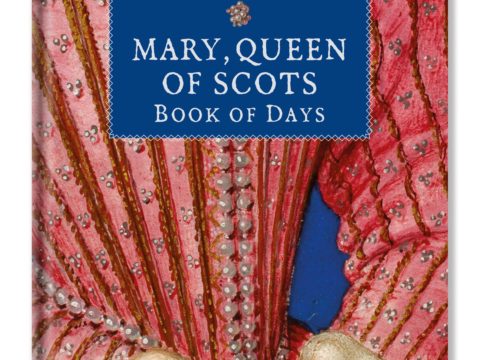Jasper Tudor: Life Story
Chapter 10 : Resistance
In early 1462 Edward IV discovered plans for a Lancastrian invasion. The plan was allegedly for three separate forces to land - one in East Anglia, the second in Sandwich in Kent and a third in Wales. The coordinator in England, the Earl of Oxford, together with his son, Aubrey, was arrested, tried and executed. This left the earldom of Oxford in the hands of John de Vere who was confirmed in that title in 1464 by Edward IV but was later to revert to the Lancastrian allegiance. Jasper was, at the time, in Brittany requesting Breton support. He was joined there in April by Queen Marguerite, and together they travelled to the court of her father, René of Anjou, King of Naples, at Ardennes. King Rene was long on titles, but short on actual cash, and could do nothing to help his daughter and grandson.
Marguerite hoped that her cousin, Louis XI (who was also Jasper’s cousin), would support Lancaster but Louis was not enthusiastic. Jasper made a flying visit to Henry VI, in Edinburgh, before being back in Normandy by 13 th June and at the French court with Marguerite by the end of the month. The Queen had agreed a deal which must have made Louis XI rub his hands in glee. She had agreed that, in return for a loan of 20,000 livres tournois, she would mortgage Calais.
This was an act which lost Marguerite much of the support she had had in England – Calais was the last remnant of both the Angevin Empire of Henry II, and Henry V’s conquest of France. Of course, in reality, Calais was held by the Yorkist government, with Warwick still Captain and the likelihood of Louis ever getting his hands on it was slim. The agreement was enshrined in a treaty dated 28th June 1462, signed on behalf of Henry VI by Marguerite, and also signed by Jasper.
In autumn of that
year Jasper returned to Scotland to await the arrival of Marguerite and the
French troops promised by Louis. Louis, however, was now under pressure from
Edward IV and failed to provide as many troops as had been anticipated. The
Lancastrians crossed the border into Northumberland and captured first Alnwick,
then Bamburgh, Dunstanburgh and Warkworth castles.
Again the depredations of Margaret’s troops (in this case largely Scottish and French) lost her local support. Various pockets of Lancastrians were besieged in these northern castles by Edward IV. Jasper tried to raise the siege of Bamburgh, but failed, although he did manage to enter into the castle. With no aid from Scotland or France forthcoming, Bamburgh was obliged to surrender on Christmas Eve 1462. The Duke of Somerset and Sir Ralph Percy accepted Edward IV’s pardon and took an oath of allegiance to him. Jasper and Lord Roos declined to accept pardons, as Edward IV would not agree to restore their lands.
For some unaccountable reason Edward IV gave them safe conducts to return to Scotland, rather than taking the opportunity to imprison or execute them. Edward’s motives for this are hard to understand – Jasper, unlike most of the rest of the English nobility, was not a relative of the King (at least only very distantly). It may have been Jasper’s position as first cousin to the King of France that encouraged Edward to be lenient, or a desire to show himself in these early days as a King who could be trusted to keep his word.
In April of the following year, Jasper, together with Exeter and a number of other Lancastrians, left Scotland for the court of Burgundy. They were permitted to travel through Burgundian territory to the French court. In 1463, Marguerite and Prince Edward joined him there, whilst King Henry remained in Scotland under the care of the Bishop of St Andrews. Henry was later part of another Lancastrian force, heavily defeated, first at Hedgely Moor in April 1464, and, the following month at Hexham.After these defeats, Henry was a fugitive in northern England for over a year before being captured and imprisoned in the Tower of London.
Marguerite set up her court-in-exile in Bar, her father’s duchy on the northern edge of France, which was part of the Holy Roman Empire, rather than a French fiefdom. It is probable that Jasper accompanied her.
Sir Jasper Tudor
Family Tree







